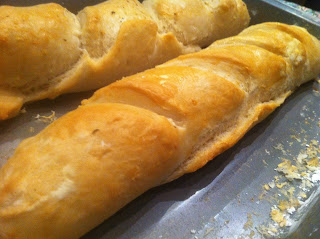Documentation of Technique.
Initially, the reason that I started my passion for food was based on a series that showed me the innovation and creativity that went into making food for people. It was a series about bread, documenting a boy's journey to invent his own cultural food for Japan. His passion made me interested in cooking as an outlet of creativity. These posts that I am going to write are a documentation of technique both technical and practical that I have learned from my experience as a cook, inventor, learner and eater of good food.
Bread: Croissants
The foundation of the shape of Croissants were founded in the Ottoman Empire. There are two shapes specifically used to designate the ingredients used to make the croissant. There are the crescent shape and the straight shaped Croissant. The crescent shape is used to designate the use of margarine within the croissant, while the straight shape is used to show the use of butter within the bread. The process of making a croissant involved making many layers of pastry dough, which is then baked in the oven giving it a flaky flavor.
Bread: Parisian Bread
Parisian bread was founded in Paris, France. It has a strong founding and culture, with the length of bread being decided by Napoleon Bonaparte. the idea of making Parisian bread, is a long layer of dough that is kneaded and then rolled up to make the pastry that expands in the oven. The tastiness and texture of the bread's outer layer is caused by the air pocket inside the rolled dough. The reason that the length of the dough was set by Napoleon was because the longer the length of the dough, the better tasting the bread. By setting a specific length of making the bread, he wanted to work against decadence. The markings on the top of the bread are used to define French bread, and causes the outer layer to be more crispy.

No comments:
Post a Comment